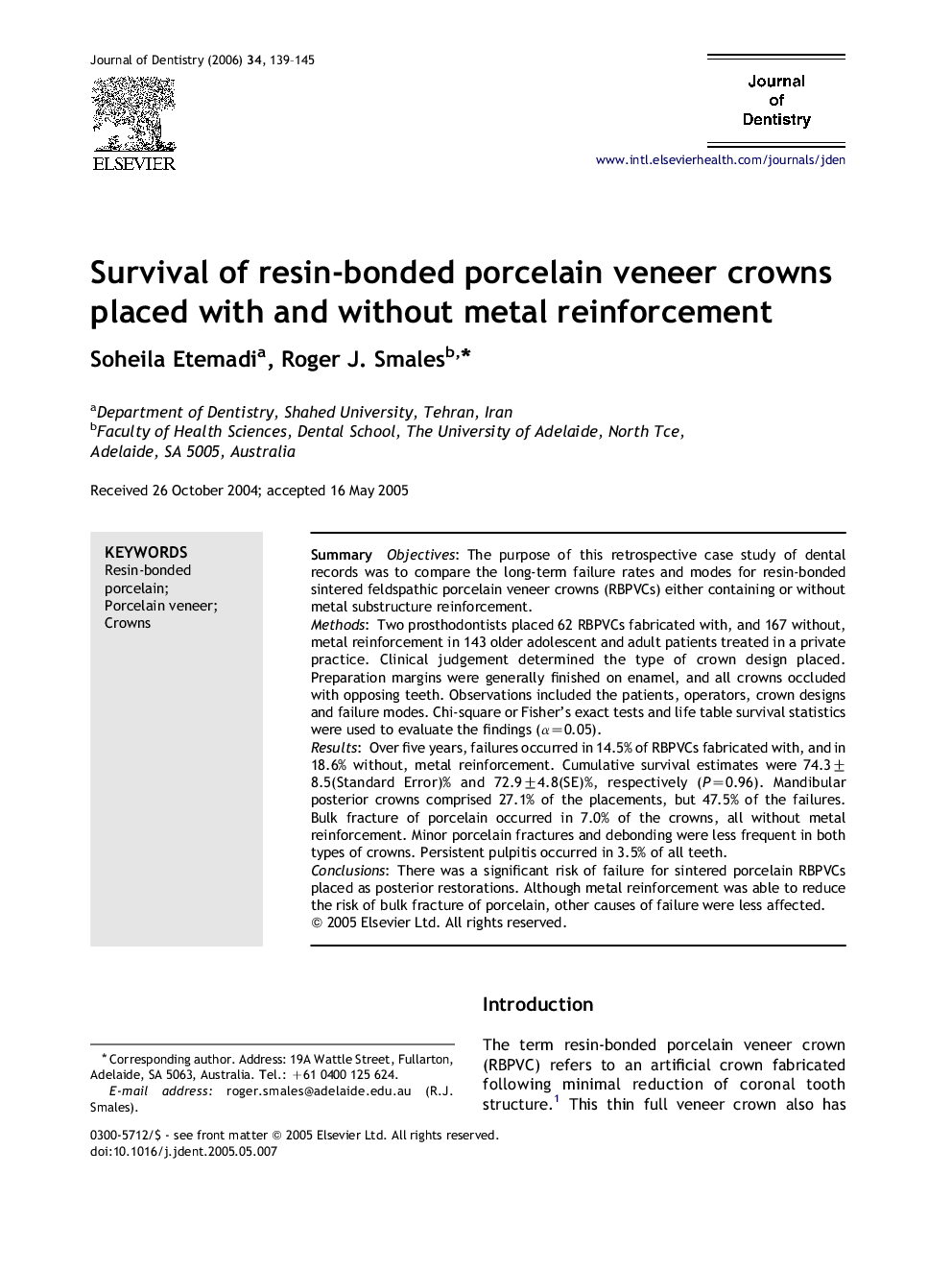| Article ID | Journal | Published Year | Pages | File Type |
|---|---|---|---|---|
| 3146491 | Journal of Dentistry | 2006 | 7 Pages |
SummaryObjectivesThe purpose of this retrospective case study of dental records was to compare the long-term failure rates and modes for resin-bonded sintered feldspathic porcelain veneer crowns (RBPVCs) either containing or without metal substructure reinforcement.MethodsTwo prosthodontists placed 62 RBPVCs fabricated with, and 167 without, metal reinforcement in 143 older adolescent and adult patients treated in a private practice. Clinical judgement determined the type of crown design placed. Preparation margins were generally finished on enamel, and all crowns occluded with opposing teeth. Observations included the patients, operators, crown designs and failure modes. Chi-square or Fisher's exact tests and life table survival statistics were used to evaluate the findings (α=0.05).ResultsOver five years, failures occurred in 14.5% of RBPVCs fabricated with, and in 18.6% without, metal reinforcement. Cumulative survival estimates were 74.3±8.5(Standard Error)% and 72.9±4.8(SE)%, respectively (P=0.96). Mandibular posterior crowns comprised 27.1% of the placements, but 47.5% of the failures. Bulk fracture of porcelain occurred in 7.0% of the crowns, all without metal reinforcement. Minor porcelain fractures and debonding were less frequent in both types of crowns. Persistent pulpitis occurred in 3.5% of all teeth.ConclusionsThere was a significant risk of failure for sintered porcelain RBPVCs placed as posterior restorations. Although metal reinforcement was able to reduce the risk of bulk fracture of porcelain, other causes of failure were less affected.
